


xxxxxThe dramatist and writer of short stories Anton Chekhov is a principal figure in Russian literature. He began writing in earnest when he was a medical student in the 1880s, and he was so successful that he continued writing throughout his life. He gained recognition with The Steppe in 1888 -
ANTON CHEKHOV 1860 -
Acknowledgements
Chekhov: by the Russian painter Osip Braz (1873-
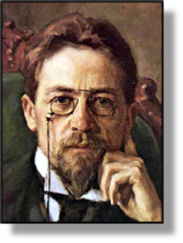 xxxxxAnton Chekhov earned his place as one of the principal figures in Russian literature, first as a writer of short stories and later as a dramatist. The best of his short stories date from 1888 onwards and include A Dreary Story, Ward Number Six, The Black Monk, The Murder, A Lady with a Dog, and In the Hollow. The plays by which he is best known are The Seagull and Uncle Vanya, produced in the 1890s, and The Three Sisters and the Cherry Orchard, staged in the early years of the 20th century. These plays foreshadowed important techniques in the development of modern drama.
xxxxxAnton Chekhov earned his place as one of the principal figures in Russian literature, first as a writer of short stories and later as a dramatist. The best of his short stories date from 1888 onwards and include A Dreary Story, Ward Number Six, The Black Monk, The Murder, A Lady with a Dog, and In the Hollow. The plays by which he is best known are The Seagull and Uncle Vanya, produced in the 1890s, and The Three Sisters and the Cherry Orchard, staged in the early years of the 20th century. These plays foreshadowed important techniques in the development of modern drama.
xxxxxChekhov was born in Taganrog on the Sea of Azov in the Ukraine. His early childhood was not a particularly happy one. His father, a pious, domineering man, made his son work in the family grocery shop, and forced him to sing in the church choir. He attended the local high school, but in 1876 his father’s business collapsed and the family was forced to move to Moscow, leaving the young Chekhov to fend for himself. He finished his schooling -
xxxxxChekhov was now recognised as a new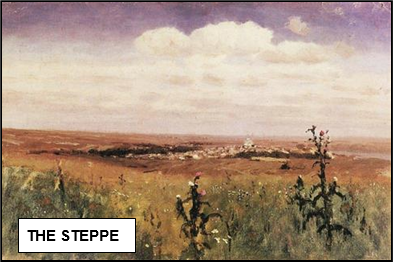 talent, but fame was achieved at a price. By then he was not only exhausted by overwork but also by a serous illness. Soon after completing his medical studies he had begun to cough up blood -
talent, but fame was achieved at a price. By then he was not only exhausted by overwork but also by a serous illness. Soon after completing his medical studies he had begun to cough up blood -
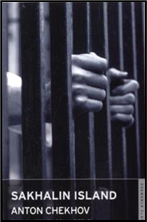
xxxxxIn 1890, somewhat recovered in health and having acquired an interest in prison reform, Chekhov undertook a long and arduous journey of some 6000 miles to visit the penal settlement on Sakhalin Island off the Siberian coast. He was horrified by what he found, distressed particularly by the brutality of the prison officers and the plight of the children living in the camps. He saw it as the extreme limits of man’s degradation. On his return he published his findings in The Island of Sakhalin, a documentary of social value. Completed in 1894, it called for government reform of the penal system.
xxxxxAfter this demanding expedition, Chekhov settled down to the life of a country doctor. In 1892 he bought a country estate in the village of Melikhovo, about 50 miles south of Moscow, and this provided a home for his ageing parents and his sister Marigya. Over the next six years he 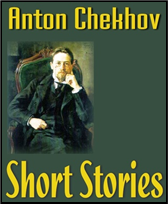 produced some of his finest short stories. These included The Butterfly, Neighbours, An Anonymous Story, Ward Number Six, The Black Monk, The Murder (based on his time on Sakhalin), Ariadne and Peasants. Many of these works were centred around village life -
produced some of his finest short stories. These included The Butterfly, Neighbours, An Anonymous Story, Ward Number Six, The Black Monk, The Murder (based on his time on Sakhalin), Ariadne and Peasants. Many of these works were centred around village life -
xxxxxAnd it was during his time at Melikhovo that Chekhov’s career as a playwright began in earnest with the completion in 1895 of The Seagull, a drama revolving around the jealousy between a mother and her son. It was not his first attempt at writing for the stage. He had produced his first play, the four-

 xxxxxHisxventure with The Seagull also got off to a bad start. Premiered in Moscow in 1896 it was a complete flop. However, the following year he got to know Constantin Stanislavski (1863-
xxxxxHisxventure with The Seagull also got off to a bad start. Premiered in Moscow in 1896 it was a complete flop. However, the following year he got to know Constantin Stanislavski (1863-
 xxxxxHis final two plays came after he moved to the Crimean coastal resort of Yalta following a serious recurrence of his tuberculosis. The Three Sisters, premiered in 1901, told of a bored, frustrated family in the Russian provinces, and three years later came his best known work The Cherry Orchard, the sale and destruction of which symbolized the decline of the semi-
xxxxxHis final two plays came after he moved to the Crimean coastal resort of Yalta following a serious recurrence of his tuberculosis. The Three Sisters, premiered in 1901, told of a bored, frustrated family in the Russian provinces, and three years later came his best known work The Cherry Orchard, the sale and destruction of which symbolized the decline of the semi-
xxxxxChekhov spent his last three winters at Yalta, and it was here that he was attracted to Olga Knipper, a leading actress in his stage productions. They married in 1901, but for much of the time they lived apart because of her acting commitments. In addition to his two plays, he wrote a number of stories while at Yalta, the best known being A Lady with a Dog and In the Hollow. During the last five years of his life he paid visits to the French Riviera and various health resorts to combat his illness, and it was while staying at a German spa at Badenweiler in the Black Forest in July 1904 that tuberculosis eventually brought about his death. He was buried in Moscow’s Novodevichy Cemetery. Today his house in Yalta is maintained as a memorial to his life and work.
xxxxxChekhov was an innovator in both his fiction and his drama. In depicting as he did the disintegration of aristocratic society in the Russia of his day, he chose to replace plot, action and climax by a detailed, almost clinical analysis of his characters, their interaction with each other, and the painful situations in which they found themselves. For the most part he extracted drama, pathos and humour from the mood and atmosphere created and intensified by the growing frustration, futility and boredom of a privileged class on the wane. His characters were not heroes, but victims who were falling prey to circumstances which they were unwilling or unable to control. As such they provided microscopic material for a subtle study of the inner realities of human nature under strain and stress within a humdrum, tedious existence. The drama came from within, via impressions and ideas, and his observations, often softened by humour, were moved by compassion, not by any social or political motive. In his stage productions -
xxxxxChekhov, who produced hundreds of stories and more than a dozen plays, was a brilliant exponent of the modern short story, and one of Russia’s outstanding playwrights, but it was not until the 1920s, after the First World War, that his work came to be fully appreciated outside of his homeland. Today he is remembered especially for his stage productions -
 xxxxxIncidentally, such was the success of Chekhov’s plays under the direction of Constantin Stanislavsky that the Moscow Art Theatre eventually adopted the seagull as its emblem and it became known as “the house of Chekhov”. However, Chekhov himself was not always pleased with Stanislavsky’s productions, feeling that his drama, not being without an element of comedy, deserved a somewhat lighter touch. ……
xxxxxIncidentally, such was the success of Chekhov’s plays under the direction of Constantin Stanislavsky that the Moscow Art Theatre eventually adopted the seagull as its emblem and it became known as “the house of Chekhov”. However, Chekhov himself was not always pleased with Stanislavsky’s productions, feeling that his drama, not being without an element of comedy, deserved a somewhat lighter touch. ……
xxxxx…… Chekhov greatly admired the works of his countryman Leo Tolstoy, but the admiration was not fully reciprocated. Tolstoy liked some of Chekhov’s short stories, but was not wholly impressed with his drama and once told him -
xxxxx…… At one point Chekhov was a close friend of the wealthy publisher Aleksey Suvorin, and he paid his first visit to western Europe in his company. Eventually, however, the friendship came to an end over the infamous Dreyfus Affair of 1894. Chekhov supported Dreyfus in his struggle for justice, but Suvorin’s reactionary newspaper New Times came out strongly against the young Jewish army officer. ……
xxxxx…… Although he spent much of his time writing, Chekhov did practice as a doctor throughout his literary career. During his time at Melikhovo, in particular, he tended the poor, paying for the drugs out of his own pocket and travelling long distances to visit the sick. While there he helped in providing schools and a clinic, and later, when living in Yalta, he financed the building of a sanatorium.
Vc-
Including:
August Strindberg

xxxxxThe Swedish dramatist and novelist August Strindberg (1849-
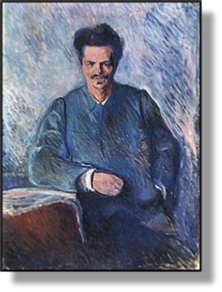 xxxxxThe Swedish dramatist and novelist August Strindberg (1849-
xxxxxThe Swedish dramatist and novelist August Strindberg (1849-
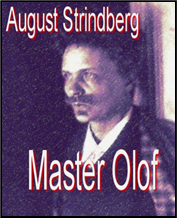 xxxxxHe was born in Stockholm where, as he himself recorded, his childhood was affected by “emotional insecurity, poverty, religious fanaticism and neglect”. He attended the local primary school and then Stockholm Lyceum before enrolling at the University of Uppsala in 1867. He officially completed his studies in 1872, but throughout his student days he tried his hand at teaching, acting and journalism, and spent his summers writing on the Island of Kymmendo. His lack of success at this time drove him to drink and bouts of depression. In 1874, however, he gained employment as an assistant librarian at the Royal Library and it was while working there that he produced his first play of note, Master Olof -
xxxxxHe was born in Stockholm where, as he himself recorded, his childhood was affected by “emotional insecurity, poverty, religious fanaticism and neglect”. He attended the local primary school and then Stockholm Lyceum before enrolling at the University of Uppsala in 1867. He officially completed his studies in 1872, but throughout his student days he tried his hand at teaching, acting and journalism, and spent his summers writing on the Island of Kymmendo. His lack of success at this time drove him to drink and bouts of depression. In 1874, however, he gained employment as an assistant librarian at the Royal Library and it was while working there that he produced his first play of note, Master Olof -
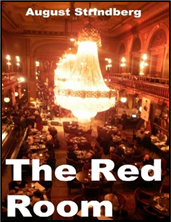
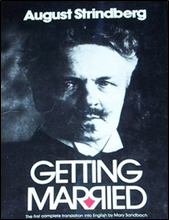 xxxxxBut it was not until 1879 that his novel The Red Room, a powerful satire on Swedish society, brought him fame. Writing then became his main occupation, but controversy soon followed. His The New Kingdom of 1882, another withering attack upon Swedish institutions, including the royal family, caused uproar and drove him into exile. Apart from occasional visits to Stockholm, he was to spend the next seventeen years of his life living and working in various European countries
xxxxxBut it was not until 1879 that his novel The Red Room, a powerful satire on Swedish society, brought him fame. Writing then became his main occupation, but controversy soon followed. His The New Kingdom of 1882, another withering attack upon Swedish institutions, including the royal family, caused uproar and drove him into exile. Apart from occasional visits to Stockholm, he was to spend the next seventeen years of his life living and working in various European countries
xxxxxMany of his early works, centred around the battle between the sexes, are naturalistic in style, creating as they do a blunt portrayal of everyday reality. As such they were quick to offend. His twelve short stories entitled Getting Married, for example, published in 1884, shocked the Swedish establishment for its misogyny and its “mockery of God’s word or sacrament”. He was eventually acquitted of blasphemy, but the book was confiscated, and the case left him deeply troubled in mind.
 xxxxxThere followed three of his best experimental plays, each at odds with contemporary social convention: The Father of 1887, a domestic tragedy focusing
xxxxxThere followed three of his best experimental plays, each at odds with contemporary social convention: The Father of 1887, a domestic tragedy focusing 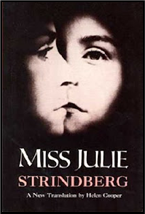 on the inherent bitterness in a man/woman relationship; The Stronger, two years later, a brilliant one-
on the inherent bitterness in a man/woman relationship; The Stronger, two years later, a brilliant one-
xxxxxIn 1892, following the failure of his second marriage, Strindberg suffered a serious mental breakdown. Known as his “Inferno crisis” -
x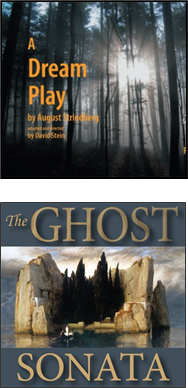 xxxxStrindberg returned to his homeland in 1897 and by the following year the “Inferno Crisis” had run its course. The immediate result was the writing of To Damascus, a three-
xxxxStrindberg returned to his homeland in 1897 and by the following year the “Inferno Crisis” had run its course. The immediate result was the writing of To Damascus, a three-
xxxxxIn 1907 Strindberg assisted in the founding of the tiny Intimate Theatre in Stockholm, and the following year he moved into Blue Tower, his final home. His last play, the Great Highway, a symbolic work tracing his own life, was produced in 1909. This was his sixtieth year, and, in his honour, widespread celebrations were held in Stockholm to mark the occasion. He died of stomach cancer three years later, and Blue Tower became a museum dedicated to his life and work and housing his library.
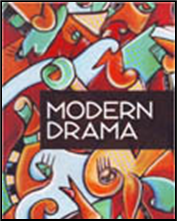
xxxxxApart from producing more than 50 plays and a large number of novels and shorts stories, Strindberg wrote essays, poetry and works of history and travel. But it is as an outstanding playwright that he is remembered today. Noted for his keen powers of analysis and his remarkable insight into human nature, he ranks alongside Ibsen and Chekhov as a precursor of the modern drama. Through his plays, critical writings and original methods of production, he is recognised as one of the most radical innovators in the theatre of his day, and a leading precursor of the 20th century movements of Expressionism and Surrealism.
xxxxxIncidentally, during his career Strindberg corresponded with Friedrich Nietzsche, and the influence of this German philosopher -
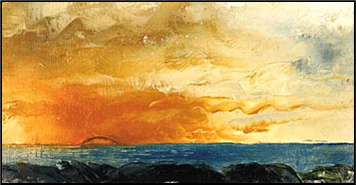 Xxxxx……XStrindberg entered into three tempestuous marriages. His first, to the Finnish noblewoman Siri von Essen, ended in divorce in 1891 and the loss of custody of his four children. The second, to Frida Uhl, a young Austrian journalist, only lasted two years, coming to an end in 1895. His third, to a Norwegian actress named Harriet Bosse, ended in separation in 1904 and the loss of his fifth child. ……
Xxxxx……XStrindberg entered into three tempestuous marriages. His first, to the Finnish noblewoman Siri von Essen, ended in divorce in 1891 and the loss of custody of his four children. The second, to Frida Uhl, a young Austrian journalist, only lasted two years, coming to an end in 1895. His third, to a Norwegian actress named Harriet Bosse, ended in separation in 1904 and the loss of his fifth child. ……
xxxxx……XHere illustrated is one of Strindberg’s Turner-


